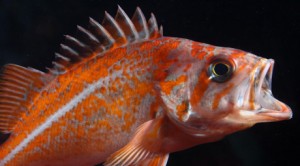Thousands of “fish notebooks” that contain valuable research data are now available for online viewing around the world, thanks to a successful project between UBC Library’s Digitization Centre and the Beaty Biodiversity Museum.
The collaborative effort involved the transcription of more than 11,200 records containing a raft of key environmental data on the UBC Fish Collection. This collection, the third-largest of its kind in Canada, features more than 850,000 specimens and more than 50,000 DNA and tissue samples; some of the resulting records are more than a century old.
“This digitization project means that people can now look for factors in the environment that may drive the existence and co-existence of species,” says Eric Taylor, Professor in UBC’s Department of Zoology, Director at the Beaty Biodiversity Museum and its Curator of Fishes.
In the past, the fish data have been used for environmental assessments, conservation efforts, understanding the factors influencing the formation and extinction of species, and more. “Now those uses will be much easier, as all the environmental and species co-occurrence records are accessible via the Internet,” adds Taylor.
The project developed after Taylor approached the Digitization Centre with the idea to digitize the notebooks; the task took just over a year to complete.
The Digitization Centre is planning to meet soon with FishBase – a self-described “global information system on fishes” – to discuss incorporating the digital notebook records into its database. Doing so would help share UBC’s data even more extensively.
